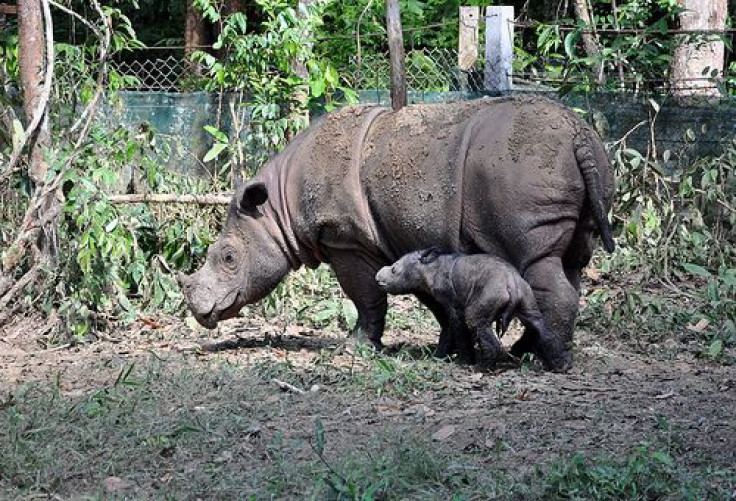Rhino Incest As Last Ditch Effort To Preserve Species: How The Cincinnati Zoo Hopes To Keep An Endangered Species On The Planet

In order to combat the plummeting population of Sumatran rhinos and stop it from going extinct, the Cincinnati Zoo has turned to "rhino incest" — mating its lone female rhino with her older brother, who came all the way from the Los Angeles Zoo.
Suci, 8, and Harapan, 6, will engage in a calculated breeding session according to Suci's ovulation cycle. Meanwhile, scientists at the zoo will test Harapan's testosterone levels to ensure he's at peak fertility as well. The breeding comes as a result of a dwindling Sumatran rhino population in recent decades — up to 90 percent since the 1980s, due to the industrialization of their habitat space and the threat of poachers.
Scientists are quick to regard the zoo's decision as an act of desperation, as one expert notes the Cincinnati Zoo, which has been a pioneer in captive breeding of the rhino species, has greater concerns over birth rates than genetic mutation.
"We don't like to do it, and long term, we really don't like to do it," Terri Roth, head of the zoo's Center for Research of Endangered Wildlife, told the Associated Press. "When your species is almost gone, you just need animals and that matters more than genes right now - these are two of the youngest, healthiest animals in the population."
The Cincinnati Zoo produced the first captive-born rhinos in modern times and has been a leader in captivity births for well over a century. The first hatching of a Trumpeter Swan and four passenger pigeons took place in 1880. In 1882, the first American bison was born in captivity.
Sumatran rhinos are indigenous to southeast Asia. A recent crisis summit in Singapore put the total population there at only 100.
"We absolutely need more calves for the population as a whole; we have to produce as many as we can as quickly as we can," said Roth. "The population is in sharp decline and there's a lot of urgency around getting her pregnant."
Suci and Harapan's parents have both since died; however, the two also have a third sibling, 11-year-old Andalas, who moved to a sanctuary in Indonesia where he became a father after mating with a wild-born rhino there two years ago. Such a breeding process is often difficult, according to Roth, because Sumatran rhinos tend not to be naturally gregarious or romantic. In order to breed Suci and Harapan, the zoo team will use a system of gates to draw the rhinos closer together.
If no magic happens, the rhinos will be separated with the lure of bananas.
Sumatran rhinos pose no threat to humans and often leave several natural benefits in their wake, such as making trails for smaller animals, spreading seeds, and clearing brush and saplings, all of which help the overall ecosystem.
"There's no human-rhino conflict," Roth said. "Are we going to put enough value in wildlife to share the earth with this ancient, peaceful, noninvasive species? If we let the Sumatran rhino die, what are we going to save?"



























